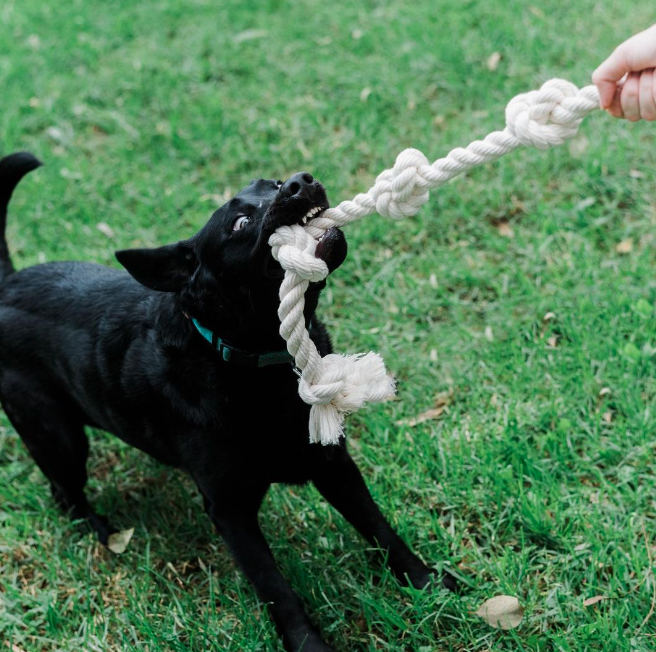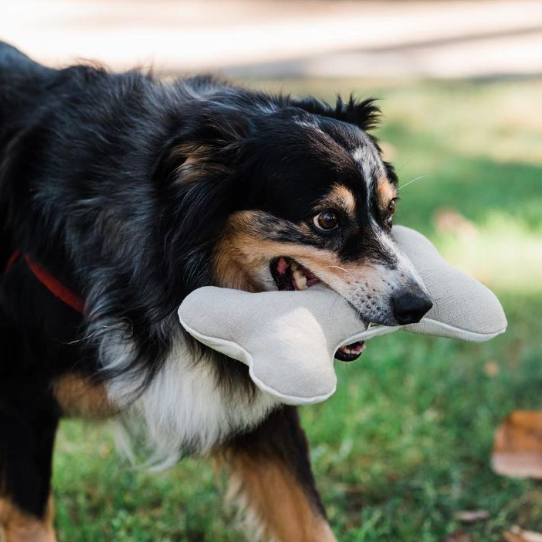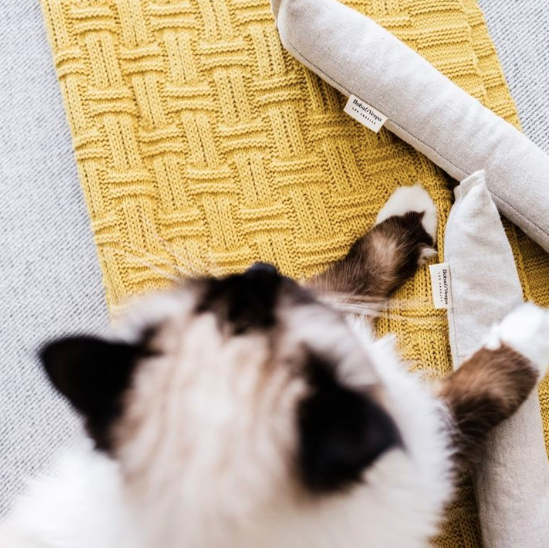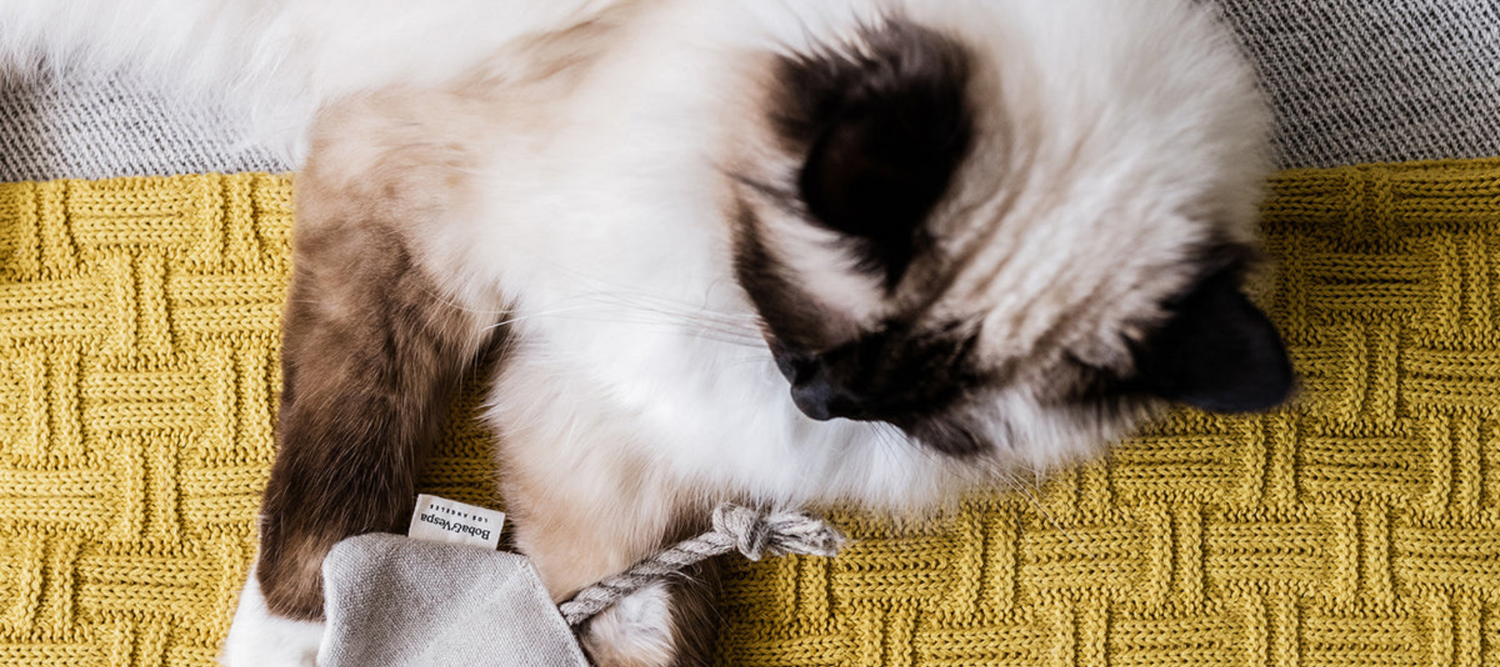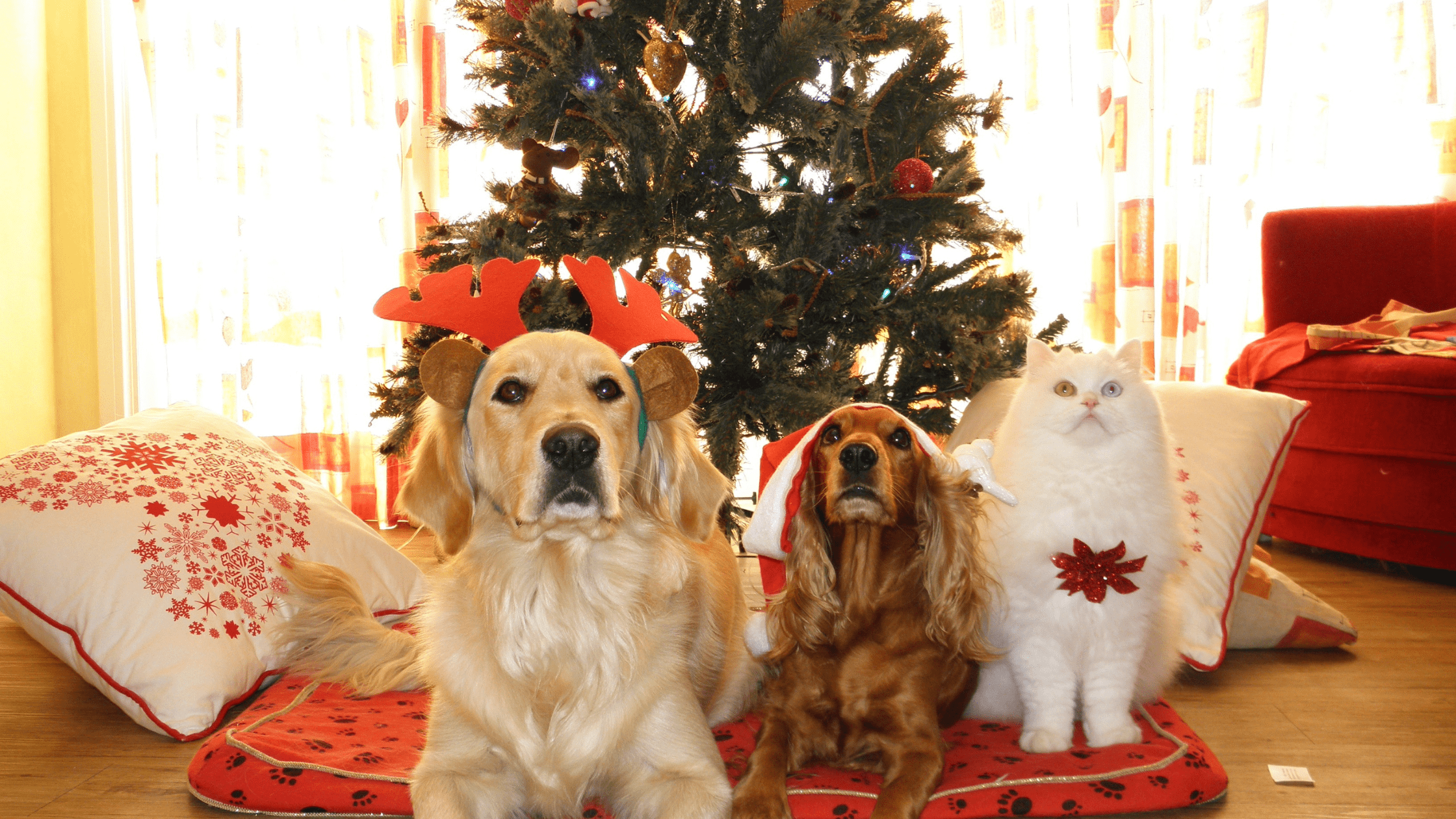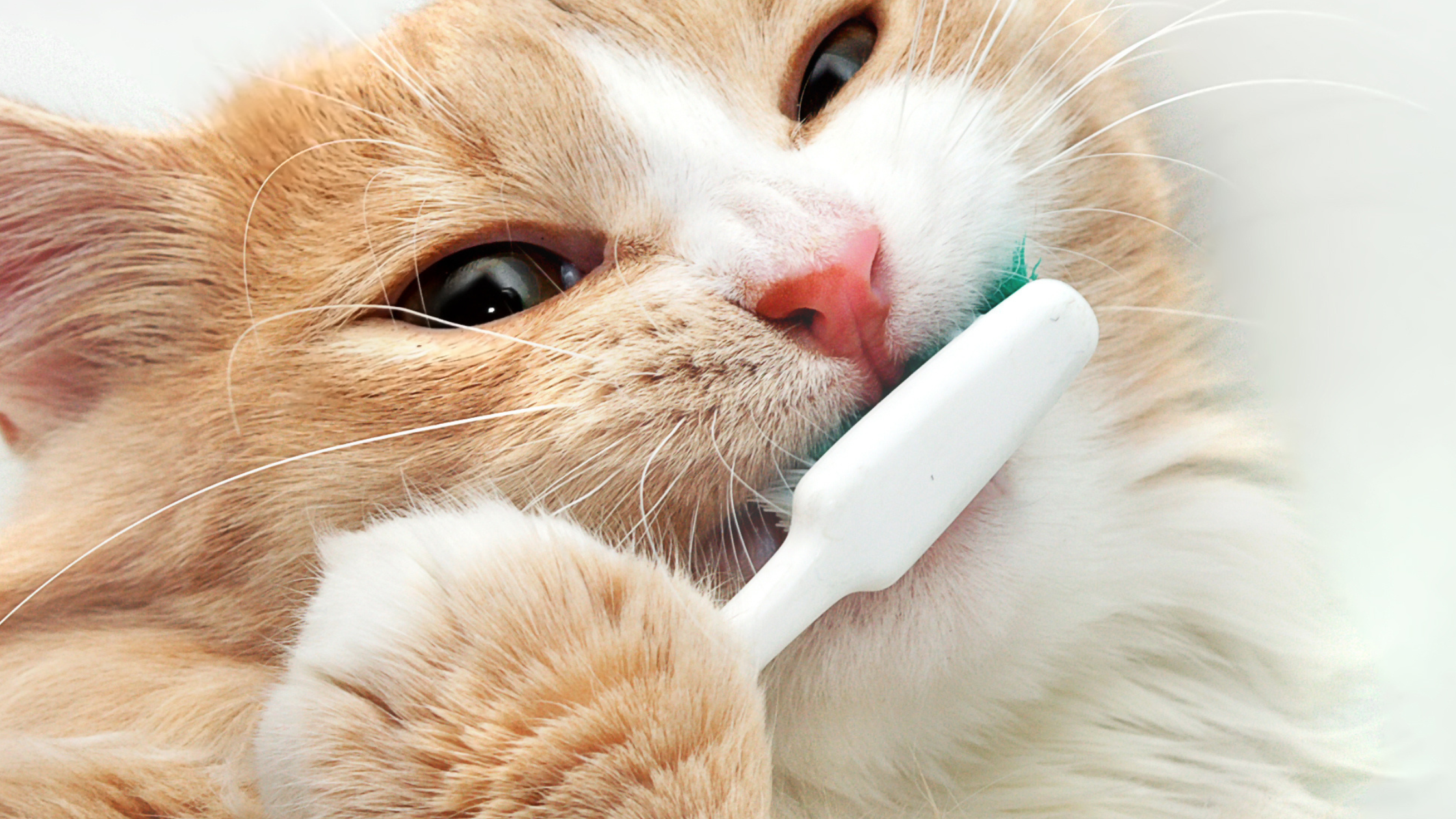Pet sustainability is a growing concern for many dog and cat owners. Many of us worry about our own personal and family’s carbon footprint and our beloved pets are part of our family – so why are our pets often an afterthought when it comes to moving towards a greener path?
It’s possible that we’re so concerned with planting trees and looking for refill stores, that we don’t stop to consider that our pets are also part of the climate crisis we’re in. In fact, some estimate that owning a pet is equivalent to owning and operating a car in terms of carbon footprint. Yikes! We created this mess together, so we need to find ways to fix it together, one step at a time.
Sustainable pet care really isn’t very hard and can often save you money and since you’re making greener choices, ease your climate anxiety too!
If you have some time and your curious to learn about a few tips and tricks on sustainable pet ownership, keep reading on!
Tips for Sustainable Pet Ownership
Buy Local When Possible
Buying local can mean supporting a local company making and selling homemade pet treats at the farmer’s market. And it can also mean buying USA factory made pet bowls made from the most durable materials that will last a lifetime.
What's important to remember is that the further away a product is made, the further it must travel to get to you. This sometimes means you must widen your definition of local to get something made with the best materials and the longest life expectancy.
Take a Look at What You Already Have
Keep existing products that still work (or repair old ones) and repurpose things you have around the house.
When you finally need something in addition to what you have or need to replace an old, worn-out item, then, only then is it time to shop for your furry friend.
While keeping this in mind, let's discuss how to choose sustainable pet products.
Navigate this greenwashing world of cleaner, greener pet products can be overwhelming, so what should you look for to reduce you and your pet's carbon footprint?
Food
Pets are responsible for an estimated 20-30% of a population’s meat and fish consumption.
We know that some animal proteins are more responsible than others for emitting methane gas, consuming and polluting water and requiring large amounts of land. Just look at this chart below and you’ll see a couple of very obvious offenders at the top of the list: beef and lamb.
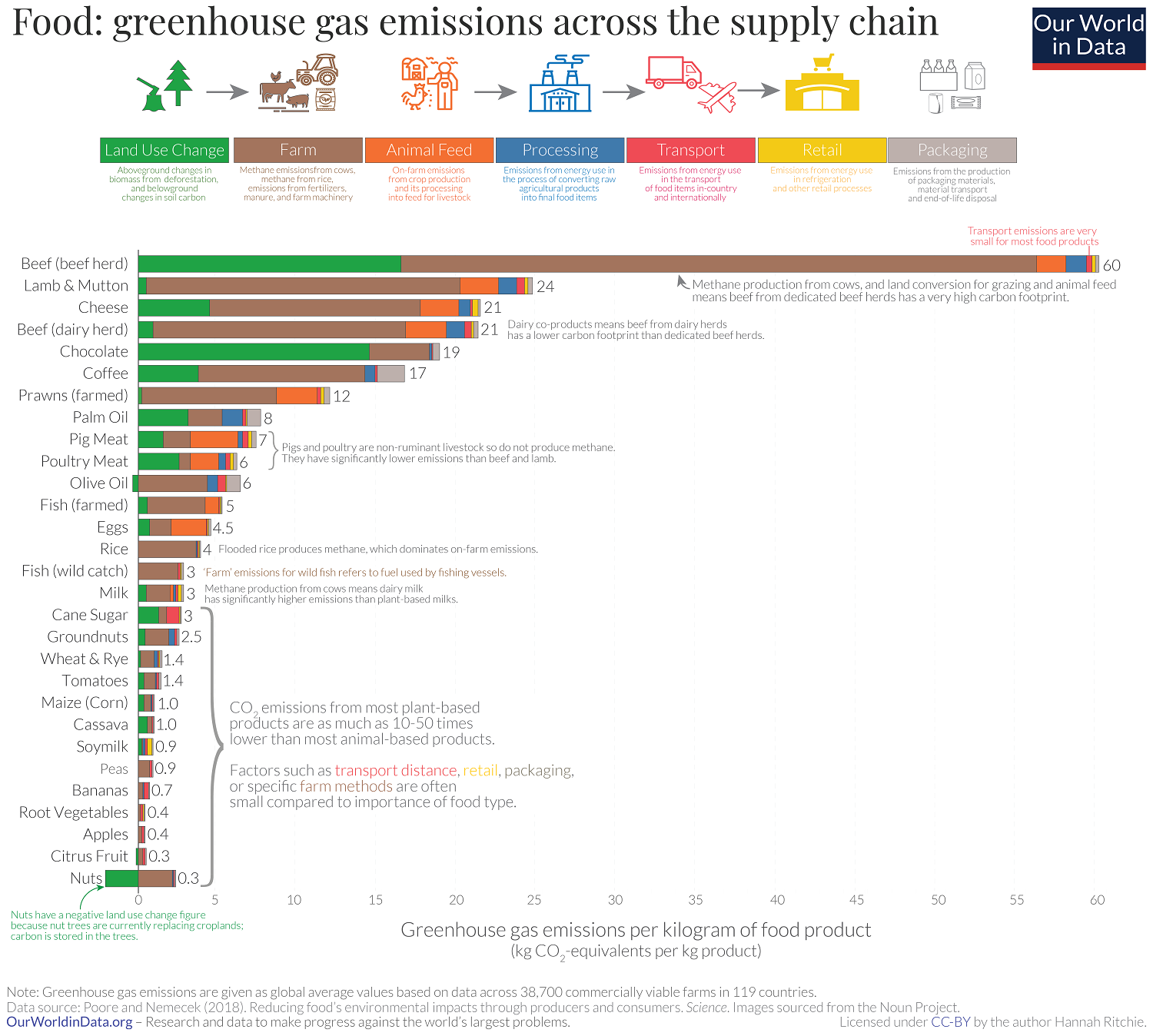
Also, think about how your pet’s food is packaged. Bags of dog food and cat food are heavy – think of their impact from shipping alone. Remember also that the bags are made from multi-layer plastic and are not recyclable, which makes them even more disastrous to our environment. For more on packaging, check out What to Look for in Sustainable Pet Packaging.
There's also many new fresh pet food businesses that provide home delivery. Fresh food and meat requires refrigerated transportation, which is the worst climate offender in terms of transport.
What We Suggest:
- Whether you feed your pet kibble, raw or home cooked, switch to a protein source with a lower carbon footprint. Beef is THE WORST climate offender, followed by lamb. Better choices are turkey, chicken, pork, duck, fish and INSECT based food! Yes, bugs! Consider vegan pet food options too. There is an ongoing debate between veterinarians and experts on whether dogs can thrive on plant-based meals. But varying protein sources can be good for your pup, so speak to your vet about going meatless a few times a week. Plant based treats are a great option if you're trying to transition out of meat for your pet.
- If you're buying packed food - buy the biggest possible bag. And consider looking for brands with recycling programs through Terracycle.
- Save packaging and shop local by home cooking with locally raised meat (especially leftover bi-products which humans avoid and pets love!) and whole foods like seasonal vegetables and fruits. Ensure your pet is getting the necessary nutrients by adding a veterinarian approved Supplement for Homemade Dog and Cat Food or Homemade Supplement for pet food allergies.
Note: Always discuss dietary changes with your veterinarian first.
To learn more, check out our post: What Is The Environmental Impact of Pet Food?
Treats
With everything we mentioned above about dog food, the same goes here.
Protein source and packaging matters, so look for cricket dog treats and veggie options. Just like kibble, nearly all dog treats and cat treats come in plastic bags that cannot be recycled. It’s such a bummer. Thankfully there are emerging alternatives.
What We Suggest:
- Make your own! Treats are quite easy to make and there are endless varieties of recipes to be found online.
- When shopping, look for treats in metal and glass containers that can be repurposed or recycled when the treats are all gobbled up. Having trouble finding glass jar treats? Arch Pet Food makes alternative protein sourced pet treats in bags made with recycled plastic so you can feed your pet with a clear eco conscience.
- Try upcycled treats made from spent brewer’s grains. Spent grains have been used for centuries to feed livestock and with the rising concern in pet sustainability, upcycled treats for dogs and cats are now quite popular too.
Waste
This one's tough and there is also a lot of misinformation out there.
- Should we flush or not?
- Should we compost or not?
- Are biodegradable, compostable or petroleum/plastic based poop bags best?
Even among pet sustainability circles, many disagree on the best methods to get rid of your cat's or dog's waste. And there is a lot of waste to dispose of given that a 75 lb dog produces 500lbs of poop every single year.
So what do we know for sure? It’s not safe to leave pet waste on the ground in urban areas especially near waterways as the bacteria and parasites can spread to other animals and leach into our waterways where algae blooms can proliferate. And since “picking up poop three times a day with plastic bags puts over 1,000 bags a year into landfills” [1], waste bags aren’t the perfect answer either.
The two primary types of plastic waste bags are petroleum (landfill use only) or corn based. Bags made with corn are biodegradable in a landfill (likely after hundreds of years) and some could theoretically be composted with a city or home program with the right certifications.
However, the state of California has passed a law requiring anything stating “biodegradable” must also be compostable under ASTM6400 standards, which states products must be "compostable in industrial composting facilities." Unfortunately, this causes a problem as nearly all industrial composters will not allow pet waste in their facilities.
We have heard of a few cities trialing pet waste composting, which is really cool, but not mainstream just yet. So, according to California law, a bag that meets ASTM6400 compostable standards can never be composted if it contains pet waste! This causes a problem for online retailers that could end up selling pet waste bags to California residents, so most companies now only state biodegradable on the packaging.
On top of that, we know cattle waste produces obscene amounts of methane, but so does pet waste! And no one is talking about this. Perhaps our landfills are sealed up so well that any methane escaping waste bags just won’t be released into the air or ground. Or perhaps it’s that no one realizes that the biodegradable bags will eventually break down and release methane – though likely it will be a thousand years or so before that starts to happen. So who cares? Future generations will be there to fix this looming problem, right?
What We Suggest:
- Try composting at home if you have a climate that allows this year-round. Also, there are right and wrong ways to do this. For example, never add pet waste compost to food gardens – you will need a separate composting system for pet waste. So please do some research and know what you are getting into. It can be done and well, but it’s a process. This is a great article that covers misconceptions about composting pet waste and how to do it right. The Pet Poo Pocket Guide is essential if you’re looking for alternative ways to dispose of your pet’s waste.
- Flush! So many people say not to do it, but my municipality allows us to flush pet waste. In fact, the National Association of Clean Water Agencies gives the green light too [3]! The confusion on whether this is safe or not seems to be due to the fact that pet feces left on the ground near waterways can run off and create problems in the water. But flushed poo is treated by a sewage treatment plant just like human poo and therefore it should work the same. I always flush my pup, Oakley’s, poo from our yard. Simply use toilet paper to scoop up the waste and flush it all together. It’s a bit more complicated with cats because litter cannot go in the toilet, ever. And since most people use litter, flushing it won't work.
- Never flush bags or flush cat litter of any kind.
- Bag it up. If neither of the above options are doable for you (like Laura and Charlotte), that leaves us with the last option, pet waste bags. These are the most convenient option when out on long walks. The only bags we recommend are biodegradable bags made without petroleum. We offer Compostable Dog Poop Bags and Compostable Cat Litter Bags made in the USA.
- Say no to fossil fuel heavy clay litter and go biodegrade instead with a plant based litter without clay and USA made. Check out our post Is Cat Litter Bad for the Environment to learn more.
Bowls
When it comes to food and water bowls, there really is nothing better than stainless. Ceramic is certainly better than plastic, but both can harbor unwanted bacteria if scratched. Some bamboo may be ok, but poor quality bamboo could contain plastic melamine-formaldehyde resin, (what is commonly called “melamine”) something you don’t want leaching into your pet’s food [2].
Ideally you need something that will last for the life of your pet and can be easily recycled.
What We Suggest:
- Switch to stainless steel bowls which are extremely durable and usually made with at least some previously recycled metal and can be recycled again at the end of the product’s life. Try to avoid any plastic parts (though 100% rubber parts is fine. Just remember to remove that part when recycling your bowls at the end of their lives).
- We love these 100% stainless steel pet bowls from Americat Company. They hold up to 16oz of water and work well for cats and small and medium-sized dogs. Oakley is a 20lb doodle and he uses this size.
Learn more in our blog post: Sustainable Dog and Cat Bowls Guide.
Also consider the benefits of a raised food bowl for cats.
Beds
Cat bedding and dog bedding is usually filled with plastic-based materials like polyester and nylon. Not only is this less than stellar when you’re trying to keep your carbon footprint low (because hello plastic) but these materials can be made with a slew of chemicals and who wants their furry friend breathing that stuff in?
What We Suggest:
- Look for bedding made from 100% natural materials both inside and out like cotton, linen, wool and hemp. These materials are ideal for both the cover and the filler, but we also love natural non-toxic latex and kapok fillers.
- Fill your own bed with worn out clothing or scraps of fabric to create an upcycled pet bed. Not only will you create a new life for items destined for the landfill, but you’ll know exactly what is inside your pet bed. And your pet will love it because it smells like you! We like these cute USA Made Sustainable Dog Bed Duvets from Bean Product for this very reason. Check out How to Create an Eco Friendly Dog Bed with Upcycled Old Clothes. Or visit our guide on the most sustainable pet bedding options.
Leashes & Collars
There is a lot to consider when shopping for sustainable pet leashes and collars. Durability is obviously crucial, but the biggest challenge is avoiding plastic.
Plastic fasteners seem to be the new norm, which we find highly disagreeable, especially when metal fasteners are so much more durable. Nylon webbing is quite common as well as vegan leathers which often contain plastic. Then of course there is usually the plastic packaging.
What We Suggest:
- Opt for upcycled materials. If you love nylon leashes and collars, avoid new nylon and look for brands making these items from previously used climbing rope or upcycled plastic bottles.
- Avoid plastic and look for all metal closings and rings. Not only will metal outlast plastic, but it looks more stylish and using more of it and less plastic will help you elevate your sustainable pet ownership standings.
Take a look at our guide on how to choose a sustainable leash, collar or harness.
Brushing
All pets need brushing at some point.
Choosing natural grooming products when you need a new tool to help with shedding or mating is a must for sustainable pet care.
Again, many brushes are made of plastic, but thankfully plastic grooming products can be replaced with some more eco friendly alternatives.
What We Suggest:
- Use an old forgotten hairbrush of your own on your pet. Many pet brush styles are modeled after human brushes.
- Stainless steel is excellent for its durability and for its cleanliness factor as it won’t harbor bacteria like plastic. At the end of its life, stainless steel items can be recycled, so stainless is clearly the winner for grooming products.
- Bamboo is another good choice. Technically bamboo items can be chipped into small pieces and composted (verify with your municipality), making it a greener choice than plastic.
- Compost your pet's hair! Yes, you can! Learn more in our post: 5 Ways to Compost Dog Hair and Cat Fur.
Check out our Grooming page for multiple stainless and bamboo options.
Bathing & Skincare
Be weary of shampoos from conventional groomers or pet stores as they are often loaded with harsh chemicals and additives. Some examples are sulphates, ethanolamines (DEA and TEA), formaldehyde, triclosan and more.
Not surprisingly, plastic packaging is a huge problem with shampoo and other grooming products. While refills are becoming more accessible for human personal care products, it can be difficult to find it for pets.
What We Suggest:
- Use clean, organic ingredients when possible.
- Make your own products or refill store bought favorites if and when you can.
- Use plastic free shampoo bars with paper packaging or nothing at all.
- Avoid skin cream in plastic tubes and bottles and go with an oil based ointment, balm or salve in eco friendly packaging instead. We’ve seen balms in anything from glass to cardboard to recyclable plastic jars. But we found two options you’ll love that work great on irritated paws and hot spots.
Toys
The worst thing about cat and dog toys? They don't ever last long and head to the landfill. On top of that, you guessed it – more plastic packaging and even plastic inside the toys like squeakers. When pets chew on toys made with nylon like nylon bones, microplastics can make their way into their stomachs! These microplastics also end up in the ocean, destroying ocean life.
What We Suggest:
- Avoid toys with many working parts. Something is bound to break or fall off and then guess where it’s headed? Yup, the landfill.
- Make toys yourself with materials you have around the house like this rope and sweet potato tugging toy or a rope toy made with braided up old cotton t-shirts. Get more tips in our post: How to Make Cat or Dog Enrichment Toys at Home DIY.
- Look for dog chews and toys made with 100% natural or organic materials like rubber, wool, cotton and hemp and even some types of bones. When they have been used up after hours of play, generally they can be composted (check with your municipality) if the filling and thread are naturally based as well. But if they end up in the landfill, these materials are way more forgiving on tummies and sea life than plastic-based materials. We happen to have a very nice collection of dog and cat toys made from sustainable materials. Check out our pet toys here.
If you've managed to make it here, thanks for sticking around! As you can see, there is a lot to know when it comes to how to choose sustainable pet products.
The answers aren’t always cut and dry. Oftentimes you’ll have to make a choice between two or more personal values when one product doesn’t meet all your needs. But that’s okay because it’s all about making the best eco friendly choice for you and your pet!
Go any questions or comments for us? We'd love to hear from you at hello@thekindpet.com.
References
[1] https://www.onegreenplanet.org/environment/eco-friendly-way-to-dispose-dog-poop/
[2] https://bioplasticsnews.com/2020/02/13/bamboo-tableware/
[3] https://www.nacwa.org/news-publications/news-detail/2019/04/01/should-you-flush-dog-poop

